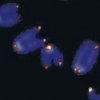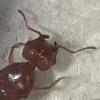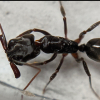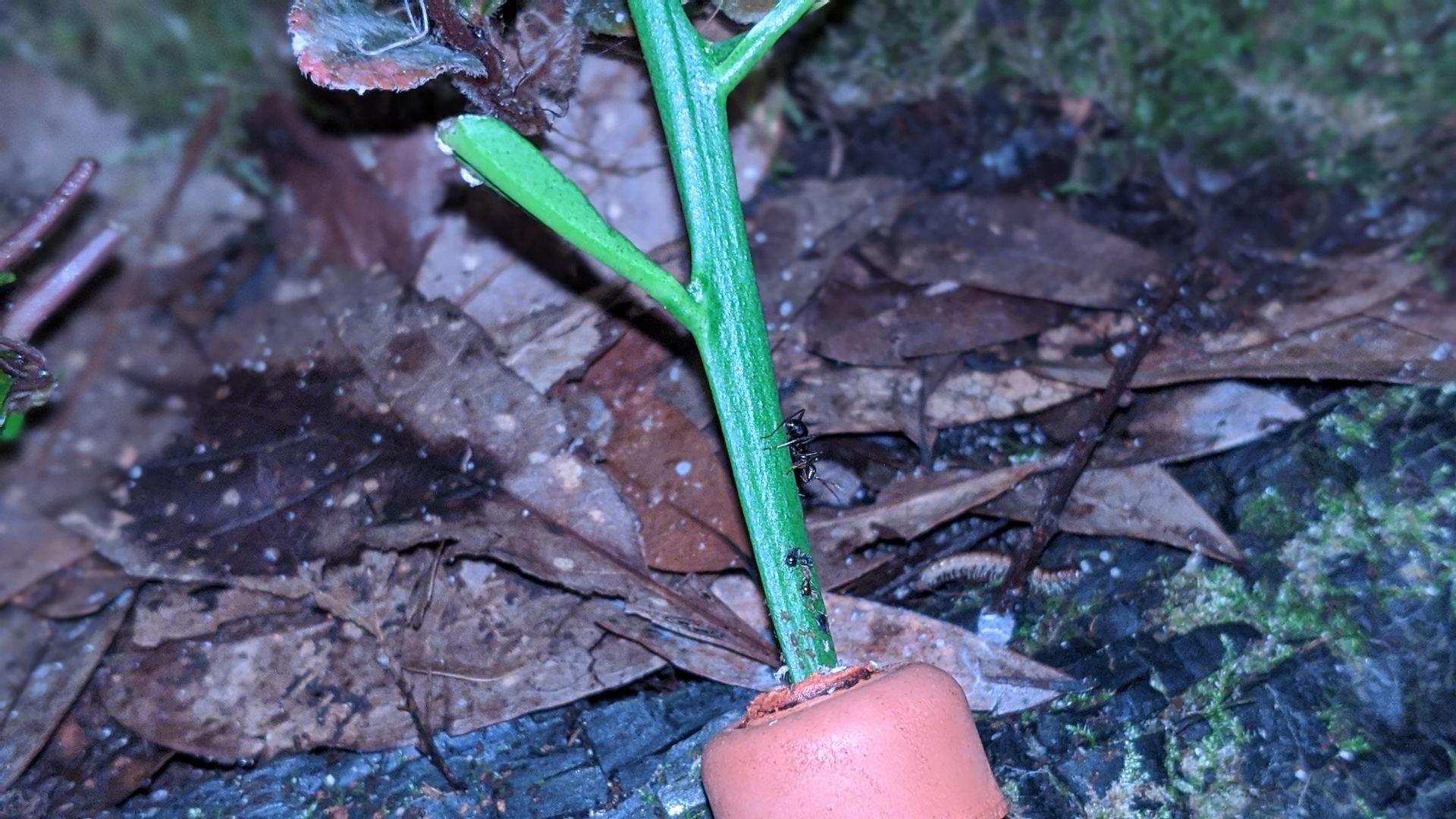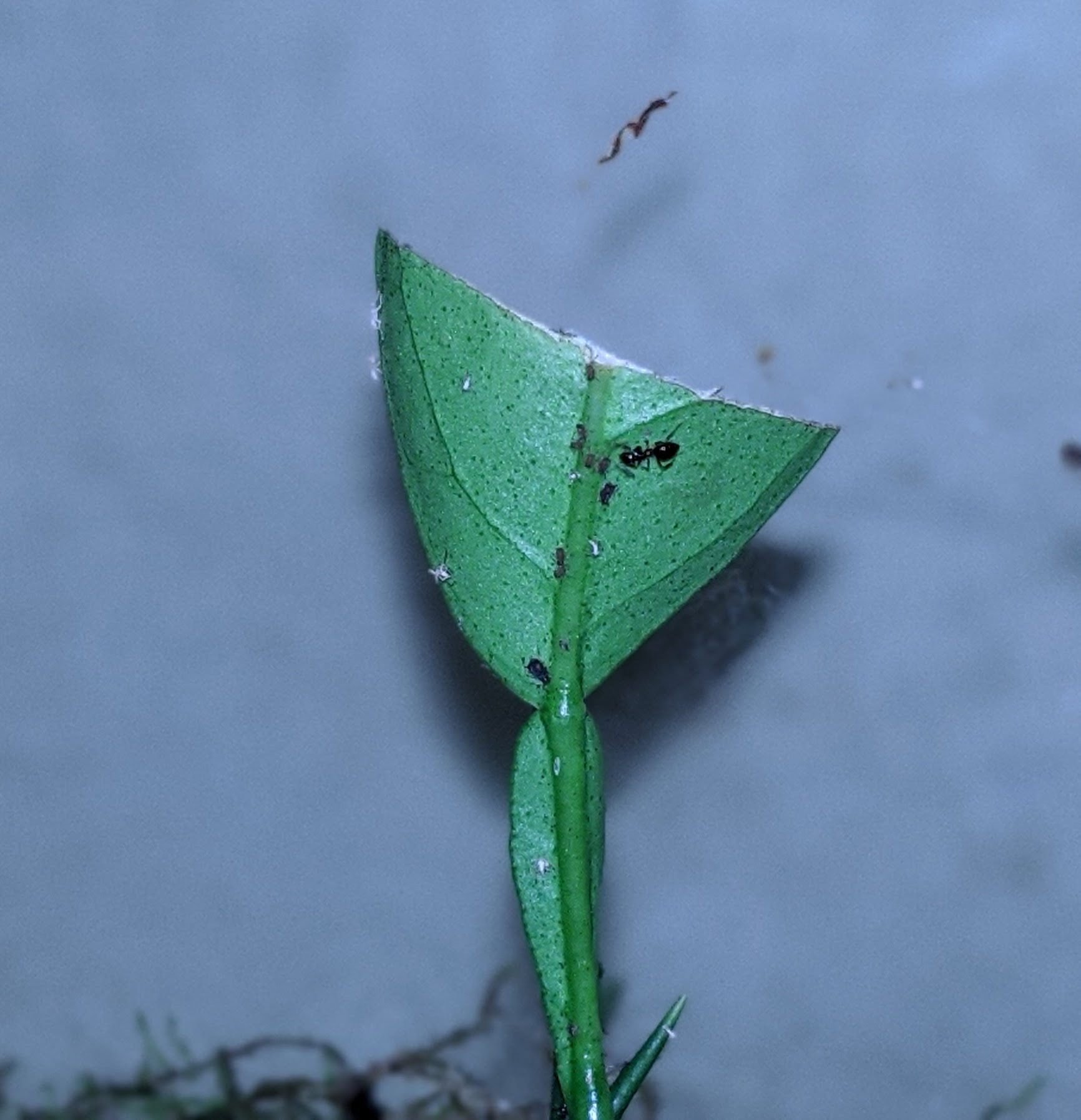So I tried to have these ants farm aphids yesterday, by putting a plant in a jar with a hole for it's stem and watering(watering would be conducted with a syringe). The hole was small enough ants couldn't get in it. The idea was that the plant would grow, and the ants would farm aphids that came with the plant. So, I took a weed that was growing in my yard and put it in the jar.
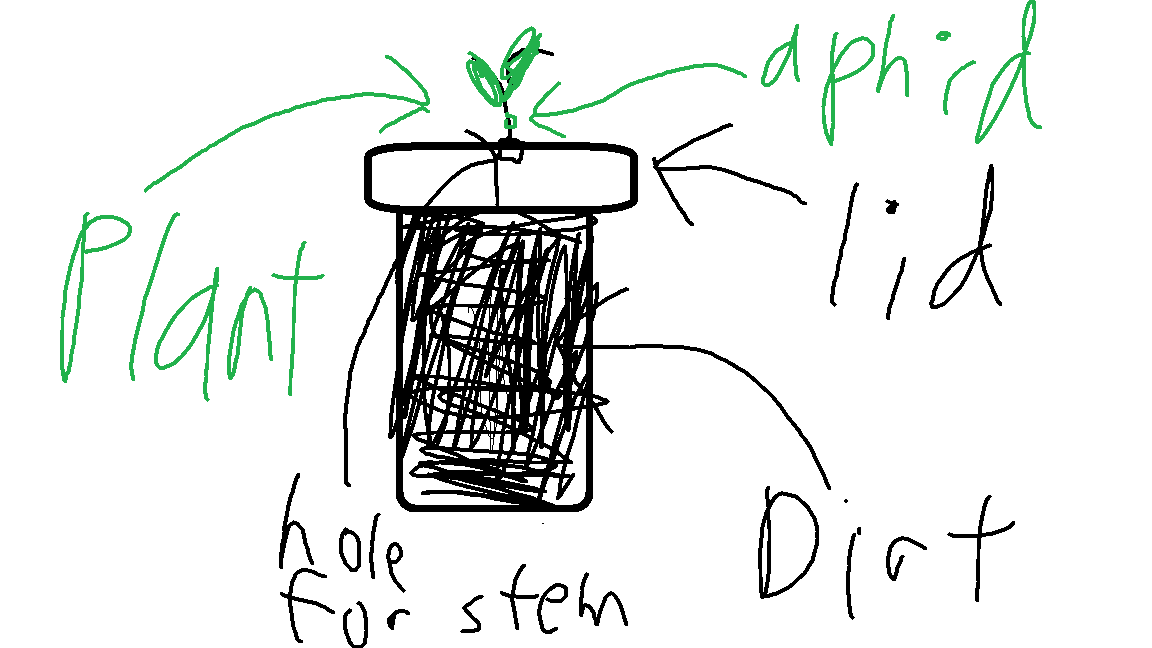
However, I seem to have over estimated my ability to keep plants alive. This plant didn't survive even a day in my care.
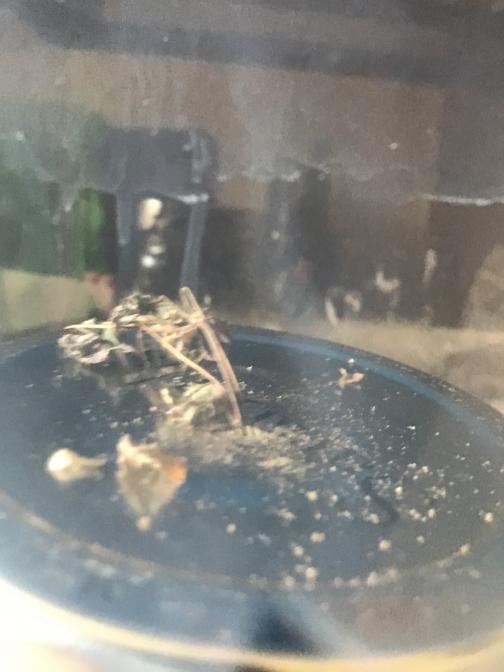
The idea of this was to see ants farming aphids in captivity without a full on vivarium. I feel like it could work, it's just I'm terrible at keeping plants. So does anyone have any feedback on this idea?



